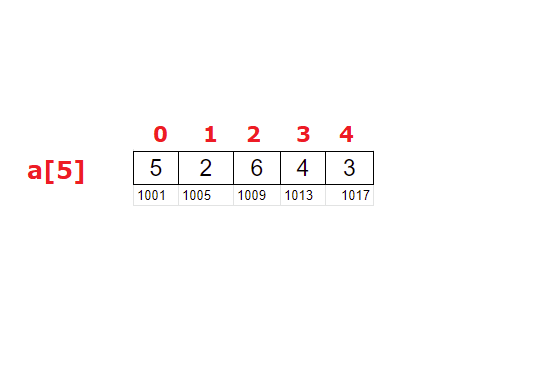Lets write a C program to find first and second biggest element/number in an array, without sorting it.
Related Read:
Find First and Second Biggest In An Array, Without Sorting It: C
Example: Expected Output
Enter 5 unique integer numbers
5
2
6
4
3
First Big: 6
Second Big: 5
Important Note:
This code only works for inputs which has unique integer numbers. If there are duplicate integer numbers which is biggest in the array, then it’ll show the same number for both first and second biggest element. We can fix it, but it’s out of scope of this problem statement. Just know the limitation of this code.
Ex: a[5] = {2, 4, 5, 3, 5};
In this case, both first big and second big will have value 5.
Video Tutorial: C Program To Find First and Second Biggest Element In An Array
[youtube https://www.youtube.com/watch?v=iBqz2ZmQHSE]
Source Code: C Program To Find First and Second Biggest Element In An Array
#include<stdio.h>
#define N 5
int main()
{
int a[N], i, fbig, sbig;
if(N < 3)
{
printf("Please have an array with at least 2 elements\n");
return(0);
}
printf("Enter %d unique integer numbers\n", N);
for(i = 0; i < N; i++)
scanf("%d", &a[i]);
(a[0] > a[1]) ? (fbig = a[0], sbig = a[1]) :
(fbig = a[1], sbig = a[0]);
for(i = 2; i < N; i++)
{
if(fbig < a[i])
{
sbig = fbig;
fbig = a[i];
}
else if(sbig < a[i])
{
sbig = a[i];
}
}
printf("First Big: %d\nSecond Big: %d\n", fbig, sbig);
return 0;
}
Output 1:
Enter 5 unique integer numbers
5
2
6
4
3
First Big: 6
Second Big: 5
Output 2:
Enter 5 unique integer numbers
2
4
5
7
9
First Big: 9
Second Big: 7
In above source code we’re making use of macros to assign array size.
Logic To Find First and Second Biggest In An Array
First we assign biggest of a[0] and a[1] to variable fbig and the second biggest to sbig.
1. Using if else
if(a[0] > a[1])
{
fbig = a[0];
sbig = a[1];
}
else
{
fbig = a[1];
sbig = a[0];
}
2. Using Ternary/Conditional Operators
(a[0] > a[1]) ? (fbig = a[0], sbig = a[1]) :
(fbig = a[1], sbig = a[0]);
In both the cases the logic is same. If a[0] is greater than a[1], then value present at a[0] will be assigned to fbig, and a[1] will be assigned to sbig. If a[0] is not greater than a[1], then a[1] will be assigned to fbig and a[0] will be assigned to sbig.
Related Read:
Biggest of Two Numbers Using Ternary Operator: C
for loop
Since both a[0] and a[1] are already sorted out, the comparison must start from a[2]. So we initialize the loop counter variable i to 2 and loop through until i < N and for each iteration we increment the value of i by 1.
Inside for loop
If value of fbig is less than the fetched element of the array, then we transfer the value of fbig to sbig and assign the new array element value to fbig.
Else if, the fetched element of the array is less than fbig but greater than sbig, then we assign the value of the array element to sbig.
for(i = 2; i < N; i++)
{
if(fbig < a[i])
{
sbig = fbig;
fbig = a[i];
}
else if(sbig < a[i])
{
sbig = a[i];
}
}
Once control exits for loop, we print the values present in fbig and sbig.
Explanation With Example
If int a[6] = {2, 4, 5, 7, 9, 8};
Here a[0] = 2 and a[1] = 4;
After executing below code:
(a[0] > a[1]) ? (fbig = a[0], sbig = a[1]) :
(fbig = a[1], sbig = a[0]);
fbig will have a[1], which is 4.
sbig will have a[0], which is 2.
| index | a[index] | sbig | fbig |
|---|---|---|---|
| 2 | a[2] = 5 | 4 | 5 |
| 3 | a[3] = 7 | 5 | 7 |
| 4 | a[4] = 9 | 7 | 9 |
| 5 | a[5] = 8 | 8 |
At the end of for loop, fbig will have 9 and sbig will have 8.
For list of all c programming interviews / viva question and answers visit: C Programming Interview / Viva Q&A List
For full C programming language free video tutorial list visit:C Programming: Beginner To Advance To Expert